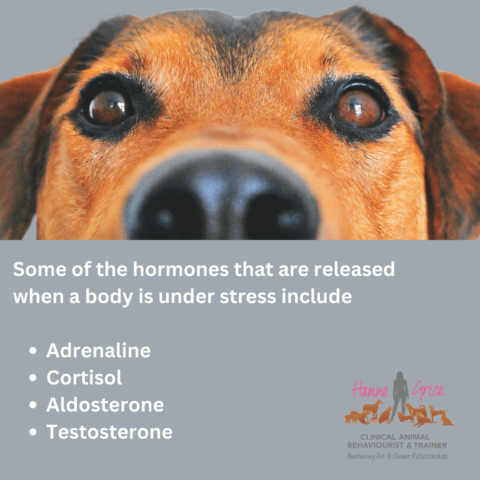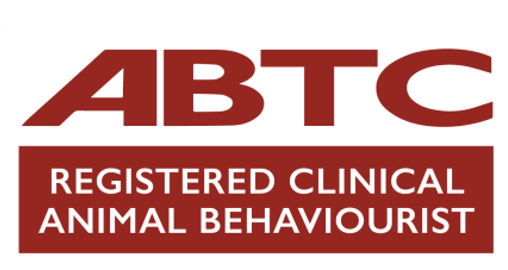
A large part of my work involves teaching pet owners to recognise the signs of stress. After all, if we can recognise the early warning signs that our four-legged friend is feeling uncomfortable then we can do something about it to take that pressure away.
But what about the stuff you cannot see? Have you ever thought about what goes on inside your dog that leads to an escalation in behaviour – and possibly a dog bite?
A dog that experiences prolonged periods of stress can end up with all sorts of problems that we don’t necessarily see from damage to the internal organs to mood disorders. So, here is a brief guide to what happens to our pooch when it is placed under stress.
Inside the dog’s body
When Fido’s body is placed under stress his body springs into action. Hormones are released called glucocorticoids and a ‘feedback loop’ is created. That means once the hormones are released and reach a particular concentration level, these hormones will – at the same time – stop the factors that stimulate its release, and this helps the body to regulate itself. However, when a dog is placed under prolonged stress this feedback loop can break down.
Some of the hormones that are released when a body is under stress include:
- Adrenaline. Typically the first hormone to be released when the dog experiences stress, trauma or physical pain. Adrenaline increases the heart rate, blood pressure, free fatty acids (which are important sources of fuel) and amount of sugar in blood causing dilation of the bronchial tubes and pupils. This results in a number of factors including the increased need for oxygen, causing the dog to pant. Adrenaline also indirectly causes the increasing amount of stress hormones that are released such as cortisol when the body is placed under stress.
- Cortisol (one of the glucocorticoids). This causes an increase in the concentration of glucose, fatty acids, amino acids in blood and can also be measured in urine. This ensures the body’s cells are fuelled with energy, helping the animal to be primed and ready for action.
- Aldosterone. Plays an important part in the regulation of blood pressure and function in the dog’s water balance, from the conservation of sodium and secretion of potassium. When dysregulated, aldosterone contributes to the onset of heart and kidney disease.
- Testosterone. This sex hormone has an anabolic effect, it build muscles and impacts behaviour. Secreted primarily by in male’s testicles and, to a lesser extent, the ovaries of females, this hormone is connected to “a higher readiness for aggression, which is particularly prevalent in the animal world.”[1]
As you can see, when a dog is placed under stress the immediate result is an increase in the heart, blood pressure and respiratory rate, together with the animal’s cells fuelled with glucose and free fatty acids. Schloz & Von Reinhardt refer to this state as being at “optimum efficiency” otherwise known as eustress.[2] This is what enables the predator to hunt – and its prey to escape.
Stress can soon tire the body.
So what happens to the dog when he is unable to get away from the stimulus that is causing the stress, or there is not sufficient time to recover from the stressful encounter?
While the body may learn to ‘cope’, at a certain point the body will start to tire and exhaustion can set in. A dog that faces prolonged periods of stress is likely to encounter various physiological and psychological problems. This can include:
– the onset of diseases to the heart and kidneys
– high blood pressure
– stomach ulcers
– chronic diarrhoea
– frequent urination
– reproductive disorders
– mood change including an increased readiness for aggression
– interference with learning and memory
– and even a heart attack can all be the result from long-term stress.
Stress can also have a huge impact on a foetus.
In 2013, researchers at the University of Edinburgh led a study investigating the link between glucocorticoids and stress-related behaviour of newborns. They found that cortisol can cause the mother’s placenta to shrink, directly affecting the developing brain of the foetus due to the reduced flow of nutrients. Furthermore, the researchers, led by Professor Megan Holmes, found that an enzyme called -β HSD2 which acts as a barrier to stress in order to protect the foetus, can be ‘overwhelmed’ during periods of prolonged stress. Using pregnant mice, the team proved that increased exposure to cortisol resulted in smaller pups, and these animals went on to exhibit the signs of mood disorders. This research shows how stress or trauma may impact the genetic character of a pregnant mother’s unborn pups.[3] This highlights just another reason why there should be greater legalisation to stop puppy-farming.
Trigger stacking
It’s important to consider the everyday interactions our dog has, in order to understand what he may find stressful and therefore causes him to be reactive in a situation – whether that’s towards another dog, another human, a particular environment or objects. This is where ‘trigger stacking’ can come into play.
Trigger stacking is when too many stimuli that the dog is sensitive to occur in a short period of time. This is where the dog’s basic survival instincts are switched on and he becomes reactive. Behaviours that may be observed can include spinning on the lead, lunging, barking, growling and so on.
Cortisol typically takes around 60 minutes to drop its level of concentration by half.[4] But when a dog is faced by lots of stimuli that he is sensitive to the negative feedback loop breaks down, cortisol continues to be released and up to four times as much cortisol as normal can be present. This can take several days to dissipate. This means we now have a ‘pressure cooker’ effect happening inside the dog’s body and mind, so if he encounters an event which he finds stressful in that same week as the other stressors, his behaviour is likely to escalate – and this is typically the time I am called in to help.
If you would like to know more or are experiencing problems with your pet, do get in touch.
In the meantime, check out this neat short video by dog trainer Donna Hill that explains how trigger stacking works.[5]
References:
[1] Marieb ‘Human Anatomy & Physiology’ 9th edition, chapter:16, page:629, question number:14.
[2] Scholz & Von Reinhardt ‘Stress in Dogs’, chapter:3, page:15.
[3] Holmes ‘Perinatal programming of stress-related behaviour by glucocorticoids.’ Abstract presented at the British Neuroscience Association’s Festival of Neuroscience conference in 2013, London.
[4] Weitzman, Fukushima, Nogeire et al ‘Twenty-four hour pattern of the episodic secretion of cortisol in normal subjects’. J Clin Endocrinol Metab, chapter:33, pages:14–22.
[5] Hill ‘Trigger Stacking & Stress Hormones’ You Tube 2013.
Learn more about our classes

Get Hanne's Book
Playing With Your Dog will help any dog owner work out the games that are best suited for their pet to play throughout his life, from puppyhood to old age. The book also shares some tricks for all ages, group activities, and recommended toys that dogs will enjoy.
























